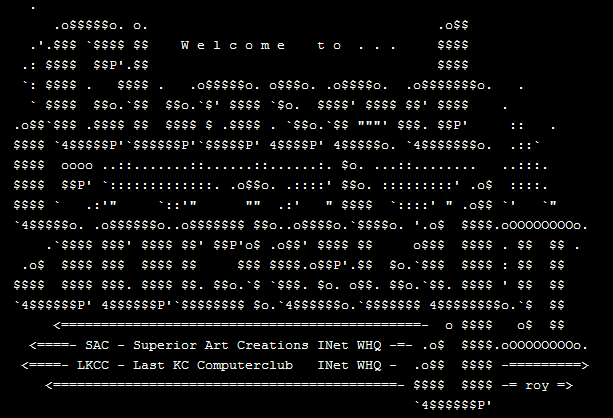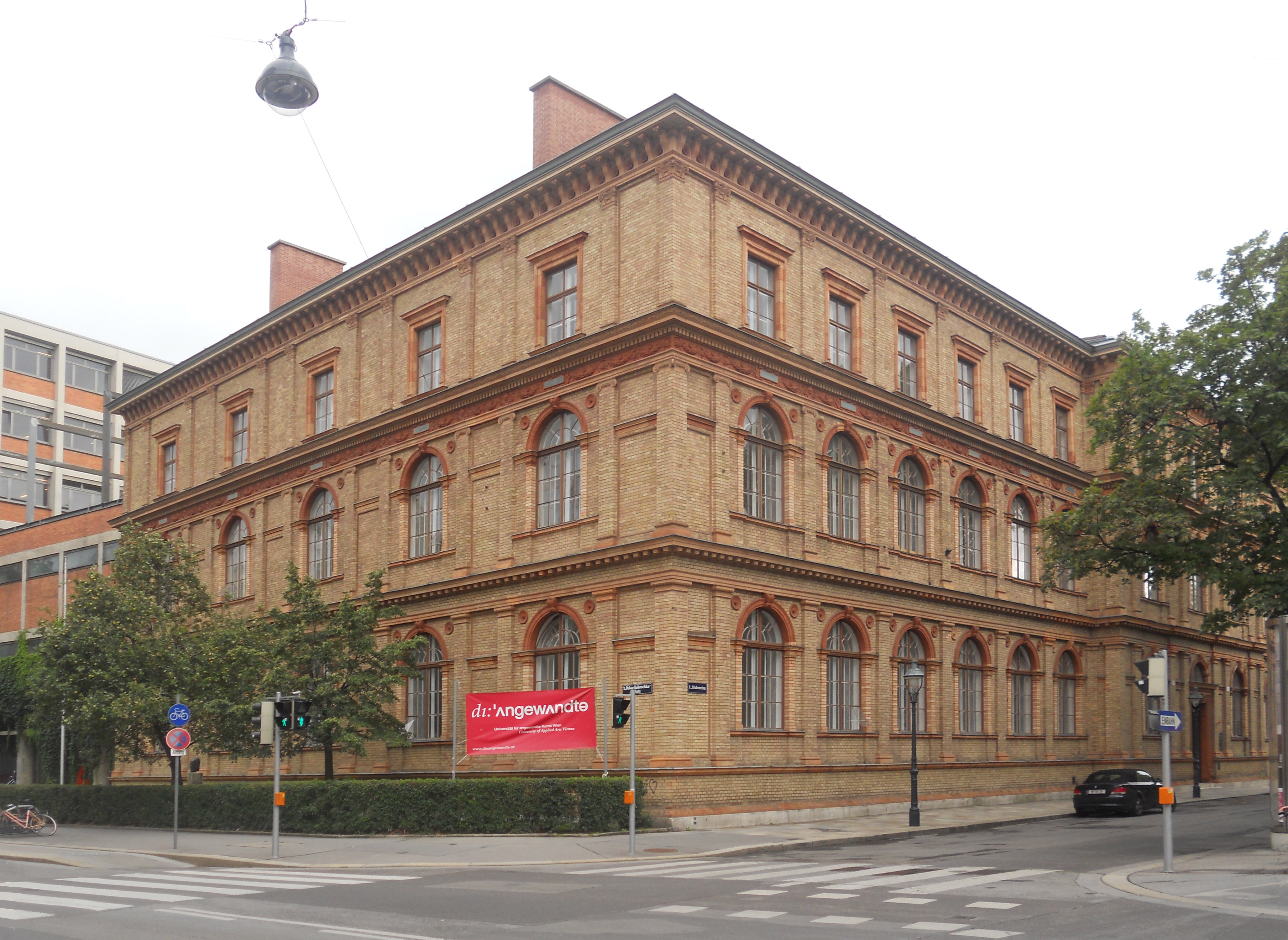|
5uper.net
5uper.net was an international artist group and "incorporated society to research, promote and reflect on the intersections of media, arts, technology and society" which has been integrated into the organisation "Artistic Bokeh" in 2010 (which later was renamed the Research Institute for Arts and Technology). The group has worked with many internationally recognized artists, such as Peter Weibel, Ubermorgen as well as with relevant international institutions in arts and research, such as the Transmediale, the ISEA International, the Ludwig Boltzmann Institute, and the University of Applied Arts Vienna. The group which had been operating out of the MuseumsQuartier in Vienna, Austria had focused on art-based research at the intersection of media, arts, technology, and society. The group was established in 2003 by Markus Hafner, Ile Cvetkoski, Matthias Tarasiewicz, Karina Lackner, and Michal Wlodkowski and was responsible for developing the Coded Cultures Coded Cultures is a c ... [...More Info...] [...Related Items...] OR: [Wikipedia] [Google] [Baidu] |
Coded Cultures
Coded Cultures is a conference and festival series developed by the Austrian artist collective 5uper.net and since 2016 is included in the Research Institute for Arts and Technology. The first ''Coded Cultures'' focused on the theme 'Decoding Digital Culture' and took place over two weeks in May 2004 at the Museumsquartier in Vienna. The 2009 version of the conference and festival was a bi-national event that took part in Austria and Japan as part of the official "Japan - Austria Friendship Year 2009". Further implementations of the festival have discussed topics such as Open Source Hardware, Right to repair, New media art and digital art in cooperation with the AXIOM (camera), apertus AXIOM project and the University of Applied Arts Vienna, the Transmediale Festival and the ISEA (ISEA International, International Symposium on Electronic Art). Coded Cultures has debated topics publicly, and many international artists, researchers and academics such as Marina Gržinić, Masaki Fuji ... [...More Info...] [...Related Items...] OR: [Wikipedia] [Google] [Baidu] |
Research Institute For Arts And Technology
The Research Institute for Arts and Technology (RIAT) is an independent and international research institute established in 2012 in Austria and operating internationally. The aim of the institute is to investigate how technology and art can relate and inform each other in areas that include: open hardware, publishing, epistemic culture, cryptocurrencies and the blockchain. In 2017 RIAT was recognized by the European Commission and Ars Electronica for innovation at the interface of science, technology and art with a STARTS Prize Honorary Mention. History The organisation began as Artistic Bokeh in 2012. It established itself as the Research Institute for Arts and Technology in 2015 after artists Bernhard Cella and Matthias Tarasiewicz made a decision to depart the University of Applied Arts Vienna. Since 2012 Cella and Tarasiewicz had both been leading research projects supported by the Austrian Science Fund at the Center of Art and Knowledge Transfer within the University of ... [...More Info...] [...Related Items...] OR: [Wikipedia] [Google] [Baidu] |
Artist Collective
An artist collective is an initiative that is the result of a group of artists working together, usually under their own management, towards shared aims. The aims of an artist collective can include almost anything that is relevant to the needs of the artist; this can range from purchasing bulk materials, sharing equipment, space or materials, to following shared ideologies, aesthetic and political views or even living and working together as an extended family. Sharing of ownership, risk, benefits, and status is implied, as opposed to other, more common business structures with an explicit hierarchy of ownership such as an association or a company. Overview Artist collectives have occurred throughout history, often gathered around central resources, for instance the ancient sculpture workshops at the marble quarries on Milos in Greece and Carrara in Italy. During the French Revolution the Louvre in Paris was occupied as an artist collective. More traditional artist collect ... [...More Info...] [...Related Items...] OR: [Wikipedia] [Google] [Baidu] |
Art-based Research
Art-based research is a mode of formal qualitative inquiry that uses artistic processes in order to understand and articulate the subjectivity of human experience. The term was first coined by Elliot Eisner (1933 - 2014) who was a professor of Art and Education at the Stanford Graduate School of Education and one of the United States' leading academic minds. Eisner used the term 'art-based research' as the title of a conference presentation held at Stanford University in 1993. Subsequently, the concept of art-based research was defined by Shaun McNiff, professor of Creative Arts Therapies at Lesley College, as 'the systematic use of the artistic process, the actual making of artistic expressions in all of the different forms of the arts, as a primary way of understanding and examining experience by both researchers and the people that they involve in their studies.' It was later additionally defined as 'research that uses the arts, in the broadest broadest sense, to explore, ... [...More Info...] [...Related Items...] OR: [Wikipedia] [Google] [Baidu] |
Digital Media Organizations
Digital usually refers to something using discrete digits, often binary digits. Technology and computing Hardware *Digital electronics, electronic circuits which operate using digital signals **Digital camera, which captures and stores digital images ***Digital versus film photography **Digital computer, a computer that handles information represented by discrete values **Digital recording, information recorded using a digital signal Socioeconomic phenomena *Digital culture, the anthropological dimension of the digital social changes *Digital divide, a form of economic and social inequality in access to or use of information and communication technologies *Digital economy, an economy based on computing and telecommunications resources Other uses in technology and computing *Digital data, discrete data, usually represented using binary numbers *Digital marketing, search engine & social media presence booster, usually represented using online visibility. *Digital media, media sto ... [...More Info...] [...Related Items...] OR: [Wikipedia] [Google] [Baidu] |
Digital Art
Digital art refers to any artistic work or practice that uses digital technology as part of the creative or presentation process, or more specifically computational art that uses and engages with digital media. Since the 1960s, various names have been used to describe digital art, including computer art, multimedia art and new media art. History John Whitney, a pioneer of computer graphics, developed the first computer-generated art in the early 1960s by utilizing mathematical operations to create art. In 1963, Ivan Sutherland invented the first user interactive computer-graphics interface known as Sketchpad. Andy Warhol created digital art using a Commodore Amiga where the computer was publicly introduced at the Lincoln Center, New York, in July 1985. An image of Debbie Harry was captured in monochrome from a video camera and digitized into a graphics program called ProPaint. Warhol manipulated the image by adding color by using flood fills. After some initial resistan ... [...More Info...] [...Related Items...] OR: [Wikipedia] [Google] [Baidu] |
New Media Art
New media art includes artworks designed and produced by means of new media, electronic media technology, technologies, comprising virtual art, computer graphics, computer animation, digital art, interactive art, sound art, Internet art, video games, robotics, 3D printing, and cyborg art. The term defines itself by the thereby created artwork, which differentiates itself from that deriving from conventional visual arts (i.e. architecture, painting, sculpture, etc.). New Media art has origins in the worlds of science, art, and performance. Some common themes found in new media art include databases, political and social activism, Afrofuturism, feminism, and identity, a ubiquitous theme found throughout is the incorporation of new technology into the work. The emphasis on medium is a defining feature of much contemporary art and many art schools and major universities now offer majors in "New Genres" or "New Media" and a growing number of graduate programs have emerged international ... [...More Info...] [...Related Items...] OR: [Wikipedia] [Google] [Baidu] |
Cultural Organisations Based In Austria
Culture () is an umbrella term which encompasses the social behavior, institutions, and norms found in human societies, as well as the knowledge, beliefs, arts, laws, customs, capabilities, and habits of the individuals in these groups.Tylor, Edward. (1871). Primitive Culture. Vol 1. New York: J.P. Putnam's Son Culture is often originated from or attributed to a specific region or location. Humans acquire culture through the learning processes of enculturation and socialization, which is shown by the diversity of cultures across societies. A cultural norm codifies acceptable conduct in society; it serves as a guideline for behavior, dress, language, and demeanor in a situation, which serves as a template for expectations in a social group. Accepting only a monoculture in a social group can bear risks, just as a single species can wither in the face of environmental change, for lack of functional responses to the change. Thus in military culture, valor is counted a typical be ... [...More Info...] [...Related Items...] OR: [Wikipedia] [Google] [Baidu] |
Austrian Artist Groups And Collectives
Austrian may refer to: * Austrians, someone from Austria or of Austrian descent ** Someone who is considered an Austrian citizen, see Austrian nationality law * Austrian German dialect * Something associated with the country Austria, for example: ** Austria-Hungary ** Austrian Airlines (AUA) ** Austrian cuisine ** Austrian Empire ** Austrian monarchy ** Austrian German (language/dialects) ** Austrian literature ** Austrian nationality law ** Austrian Service Abroad ** Music of Austria **Austrian School of Economics * Economists of the Austrian school of economic thought * The Austrian Attack variation of the Pirc Defence chess opening. See also * * * Austria (other) * Australian (other) * L'Autrichienne (other) is the feminine form of the French word , meaning "The Austrian". It may refer to: *A derogatory nickname for Queen Marie Antoinette of France *L'Autrichienne (film), ''L'Autrichienne'' (film), a 1990 French film on Marie Antoinette with ... [...More Info...] [...Related Items...] OR: [Wikipedia] [Google] [Baidu] |
Matthias Tarasiewicz
Matthias is a name derived from the Greek Ματθαίος, in origin similar to Matthew. People Notable people named Matthias include the following: In religion: * Saint Matthias, chosen as an apostle in Acts 1:21–26 to replace Judas Iscariot * Matthias of Trakai (–1453), Lithuanian clergyman, bishop of Samogitia and of Vilnius * Matthias Flacius, Lutheran reformer * Matthias the Prophet, see Robert Matthews (religious impostor) Claimed to be the reincarnation of the original Matthias during the Second Great Awakening * Matthias F. Cowley, Latter-day Saint apostle In the arts: * Matthias Grünewald, highly regarded painter from the German Renaissance * Matthías Jochumsson, Icelandic poet * Matthias Lechner, German film art director * Matthias Paul (actor), German actor * Matthias Schoenaerts, Belgian actor In nobility: * Matthias Corvinus of Hungary, King of Hungary * Matthias, Holy Roman Emperor, Emperor of the Holy Roman Empire (Habsburg dynasty) In music: * Matt ... [...More Info...] [...Related Items...] OR: [Wikipedia] [Google] [Baidu] |
University Of Applied Arts Vienna
The University of Applied Arts Vienna (german: Universität für angewandte Kunst Wien, or informally just ''Die Angewandte'') is an arts university and institution of higher education in Vienna, the capital of Austria. It has had university status since 1970. History The predecessor of the ''Angewandte'' was founded in 1863 as the ''k. k. Kunstgewerbeschule'' (Vienna School of Arts and Crafts), following the example of the South Kensington Museum in London, now the Victoria & Albert Museum, to set up a place of advanced education for designers and craftsmen with the Arts and Crafts School in Vienna. It was closely associated with the ''Österreichischen Museums für Kunst und Industrie'' (Imperial Royal Austrian Museum of Art and Industry, today known as the MAK). It was the first school of its kind on the continent. In 1941 it became an institution of higher education. 1941-45 it was called "Reichshochschule fuer angewandte Kunst", and in 1948 was taken over by the Austrian ... [...More Info...] [...Related Items...] OR: [Wikipedia] [Google] [Baidu] |



